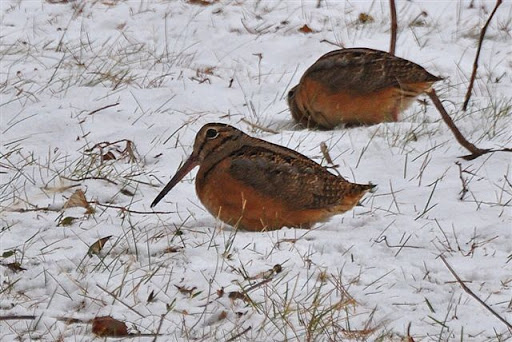American Woodcock and Springtime

A couple of weeks ago, as I was helping my kid pack up her Simon’s Rock dorm room, I heard the unmistakable peeent of a woodcock. Each time I came out to the car with another armload of laundry, books, or art supplies, I’d hear it somewhere nearby. It was dusk, the hour that these chubby little shorebirds start calling to their mates. You can only hear them for a few weeks in March and early April as they arrive back in the Northeast from their wintering grounds in the Carolinas and Texas.
I used to take Ella and her sister out on chilly spring evenings when they were little, to hear the woodcocks call and try to spot them as the male would rise into the air in a dizzy little dance, trying to impress the female hiding somewhere nearby. This time, she was too focused on her sadness at leaving campus, and the likelihood that she’d never return to finish out her final year, to care about a little bird.
But I found it comforting that nature was carrying on in spite of the chaos in the human world, and stood for a few minutes by the car, trying to give Ella a few last minutes to say goodbye to her room, while I tried to spot the little creature. Sure enough, it was standing not ten feet from me, illuminated by a lamppost, zzzeeeping, quite unafraid.
Woodcock populations declined dramatically in the 1800s due to hunting, but rebounded in the last century. Grey and brown all over, they are about the size of a robin but very round and chubby, with very long straight bills. They are found in forest edges, wet meadows and old fields throughout our region – as long as that habitat is protected, we will continue to enjoy the springtime display of the woodcocks.
